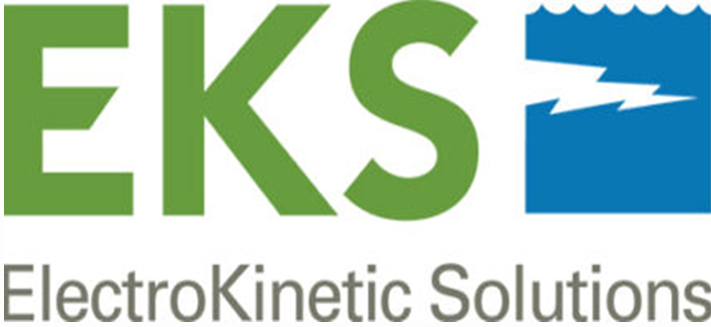What is the EKS-DT process?
The EKS-DT process is a technology designed to dewater difficult-to-dewater materials like fluid fine tailings (FFT).
How does the EKS-DT process work?

The EKS-DT process is based on the physics of electrokinetics. Electrophoresis causes fines to break free of electrostatic colloidal forces and to settle rapidly out of suspension. A second electrokinetic reaction, electro-osmosis, causes the bound water in colloidal suspensions and in soils to become mobile; the water is released to the surface. Electrophoresis and electro-osmosis work together to accelerate dewatering.
The EKS-DT process involves two stages. During Stage 1, slurries are dewatered to the point that a soil matrix is formed. Stage 2 involves further dewatering of the soil until a desired water content/strength is achieved. The physics of Stage 1 differ somewhat from those occurring during Stage 2 but both stages involve the same dewatering equipment. The primary difference is modifications to how the power is applied during each stage.
Has the EKS-DT process been proven to work on FFT?
Yes. EKS has been successfully conducting experiments dewatering FFT with the EKS-DT process since 2010. The process has been used successfully by EKS to dewater FFT at various scales using different setups. Through these experiments, EKS has gained considerable understanding and confidence in the technology.
In 2019 EKS commissioned a 1,700m3 large scale field test in Vegreville, AB. The purpose of this test was to prove the scalability of our technology. EKS requested “the worse of the worse” tailing, which industry provided. Our tailings had an SFR (Sand-To-Fines Ratio) of <0.05! Anyone can dewater coarse particles, but few can dewater fine particles economically in a timely fashion.

Results from this field test are now in (please contact us if you are interested in detailed results), and our technology beat economic and dewatering rate expectations when scaling to a larger test. By testing the EKS-DT process on tailings with an SFR < 0.05, we have proven that our technology not only scales, but smashes the competing technology from an environmental and economic perspective.
In 2015, EKS set up two larger scale tests (i.e. 130 m3 and 25 m3) at the C-FER facility in Edmonton. These tests were designed to confirm the scalability of the technology among other things. The results confirmed that the technology is scalable and that major energy efficiencies can be achieved during Stage 1 of the process when it is scaled up.

25 m3 test at C-FER

130 m3 test at C-FER
Is the EKS-DT process commercially viable for dewatering FFT?
Yes. EKS has developed a deployment strategy for dewatering FFT commercially at scale in oil sands tailings ponds. This strategy lays out the details for commercially deploying and operating the process. The dewatering costs associated with this deployment and operating strategy are highly competitive.

What remains to be done before the process can be commercially applied to dewater FFT?
Now that the field demonstration has been completed, EKS’s last step to full commercialisation is a commercial pilot.
Are the EKS-DT dewatering costs competitive with existing dewatering technologies?
Yes. COSIA (Canada’s Oil Sands Innovation Alliance) recently published a comparative LCA for five current tailings management practices. This LCA was supported by oil sands producers and represents the best available capital and operating data for these technologies. EKS’s LCA used the same metholdogy as the COSIA LCA to allow for a “apples to apples” comparison.
Where can the EKS-DT process be used in the oil sands?
As part of its assessment of the commercial viability of the EKS-DT process, EKS has evaluated how the process might be deployed for different applications. The process can be effectively deployed to:
• Dewater legacy FFT in large tailings basins,
• Dewater freshly produced FFT that has not undergone any other dewatering process,
• Further dewater FFT that has been partially dewatered with existing technologies,
• Consolidate the bottom sediments of end-pit lakes,
• Form impervious geotechnically stable caps over unstable partially dewatered FFT deposits,
• Strengthen soft spots in off-spec areas of partially dewatered FFT deposits, and
• Stabilise tailings basin berms.
Can the EKS-DT process be used for other commercial applications?
Yes. Some of the other commercial applications that EKS is pursuing include:
• Dewatering drilling mud,
• Stabilising dredging spoils, and
• Dewatering mine tailings.
